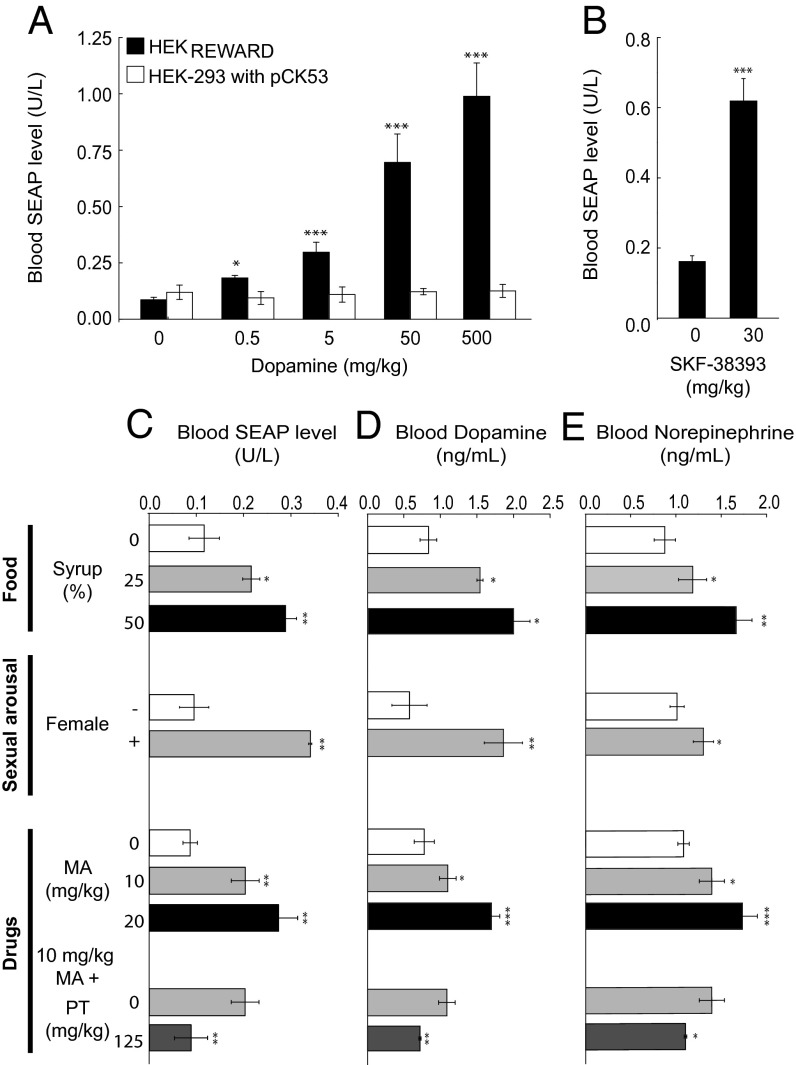Fig. 3.
Dopamine and reward-controlled transgene expression in mice. (A and B) Dopamine-responsive SEAP expression fine-tuning in mice. Wild-type mice implanted with microencapsulated HEKREWARD, HEK-293 transfected with pCK53 (PCRE-SEAP-pA) or nonengineered parental HEK-293 cells (2 × 106 cells/mouse) were injected with different doses of dopamine (A) or the synthetic DRD1 agonist SKF-38393 (B), and corresponding blood SEAP levels were profiled after 48 h. (C–E) Reward-controlled SEAP expression in mice. Wild-type mice implanted with microencapsulated HEKREWARD (2 × 106 cells/mouse) were exposed to different reward conditions including food (syrup/water mixtures), sexual arousal [treated male mice with (+) and without (−) female mouse company], and the addiction drug methamphetamine (MA) that was optionally coadministered with the ganglionic blocker pentolinium tartate (PT). SEAP (C), dopamine (D), and norepinephrine (E) levels were profiled in the blood of treated animals after 48 h. Data are mean ± SEM; statistics by two-tailed t test; n = 8 mice. *P < 0.05, **P < 0.005, ***P < 0.0001.

